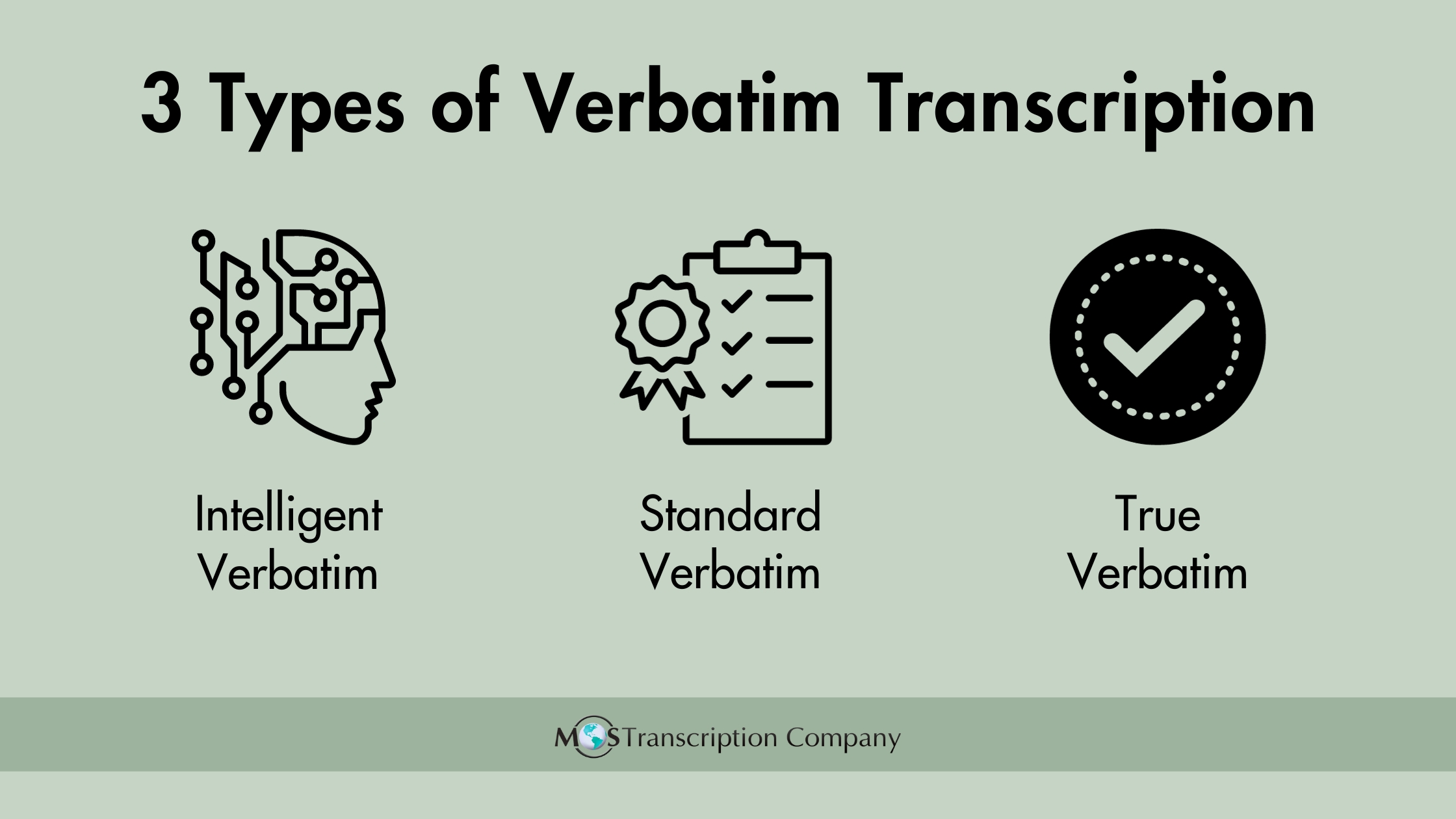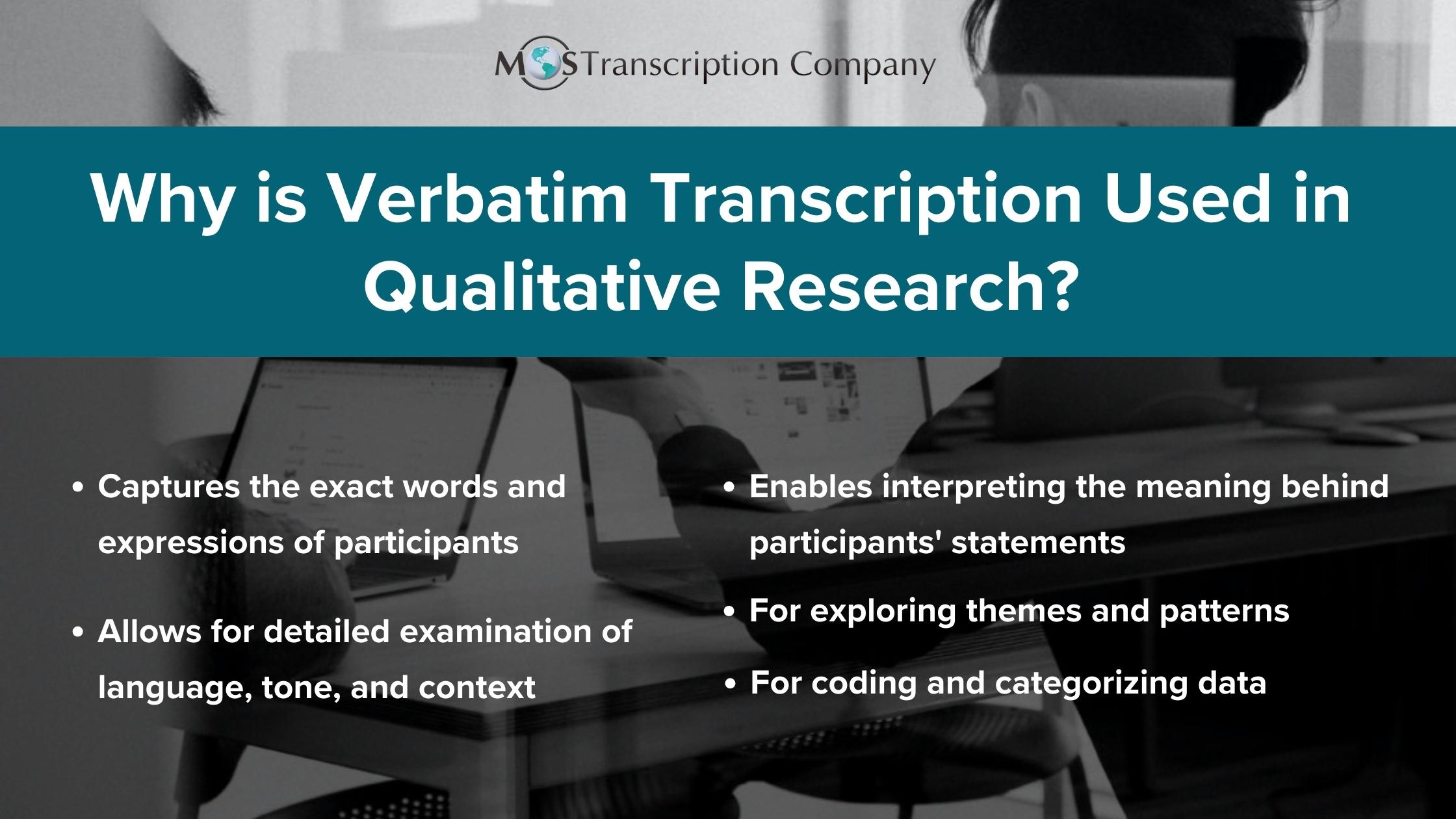
A verbatim transcription is a textual representation that mirrors the spoken words in an audio recording. In contrast to alternative transcription styles, this precise method captures every element within the dialogue, including stutters, errors, verbal idiosyncrasies, and pauses. Successfully completion of this transcription process requires a sharp sense of hearing, meticulous attention to detail, and the ability to accurately record spoken content while maintaining the authenticity of the conversation.
Seeking the assistance of a professional general transcription company is the best solution for accurate and efficient verbatim transcription of the recording. Let’s dive into the important rules to follow when doing verbatim transcription.
4 Rules of Verbatim Transcription
- Get all the words right: When it comes to verbatim transcription, paraphrasing statements to convey the general idea instead of typing every word said is not the correct approach. Paraphrasing is acceptable for business transcription but not for researchers and academic analysts as they need to know exactly what is being said. The content should fit the practical design and theoretical foundation of each investigation. Therefore it is important to type each and every word accurately.
- Don’t leave out any non-verbal communication: Communication is not just exchanging of information. It also includes non-verbal communication such as laughter, pauses, hand gestures, etc., which helps to convey a true picture of what is being said.Example:
- Are you coming with me today?
- No! [Laughs] Maybe next time.
Verbatim transcription should capture even the false starts, grammatical errors, and repetition of words. This helps researchers to get a true account of the event exactly as spoken. It also conveys the thought process behind the words.
- Include fillers and false starts: Fillers like “um..,” “ah..,” “you know”, etc. are often used by speakers when they take time to think. False starts are incomplete sentences spoken by the speaker. Sometimes, a person starts speaking and leaves the sentence incomplete. However, the speaker’s thinking process could be correctly judged by observing such fillers and starts and noting them down, which is necessary for verbatim transcripts.
Fillers and false starts can break the flow of speaking but it provides insights into the thinking process of a speaker. Verbatim transcription should include all false starts and fillers.
- Mention external sounds also: For qualitative research and market research, a detailed transcript is required that includes what happening in the surroundings when the interviewee is speaking. The external sounds may include opening a door, people walking, a side conversation between fellow participants, etc. All these external sounds and back ground noises should be duly captured in the transcript, along with the conversation. These sounds should be mentioned in brackets, and if necessary, along with time stamps.
Verbatim transcription of research data not only attempts to capture the meaning and perception or record the interview, but also records the context in which these were created. Text versions of audio recordings are easy to read and skim through much faster than listening to the audio.
Benefits of Verbatim Transcripts for Researchers
There are many reasons why verbatim is the preferred style for qualitative research transcription. Firstly, a detailed and verbatim account of participants’ responses allow for a comprehensive analysis of language nuances, expressions, and contextual subtleties. Inclusion of the original spoken words facilitates a thorough exploration of themes and patterns, which is crucial in qualitative research. Additionally, text documents offer a tangible and easily shareable format for collaboration among researchers, enabling a more straightforward exchange of ideas and interpretations. Moreover, textual data facilitates systematic coding and categorization, streamlining the organization of information for subsequent analysis. In academia, the written form also aligns with traditional scholarly documentation, making it easier for researchers to integrate qualitative findings into academic papers, theses, and presentations.
When a number of interviews and other audio recordings are involved that require verbatim transcription, researchers can rely on professional research transcription services that ensure customized turnaround time and affordable rates.
Streamline your audio-to-text conversion tasks with our audio transcription services.





